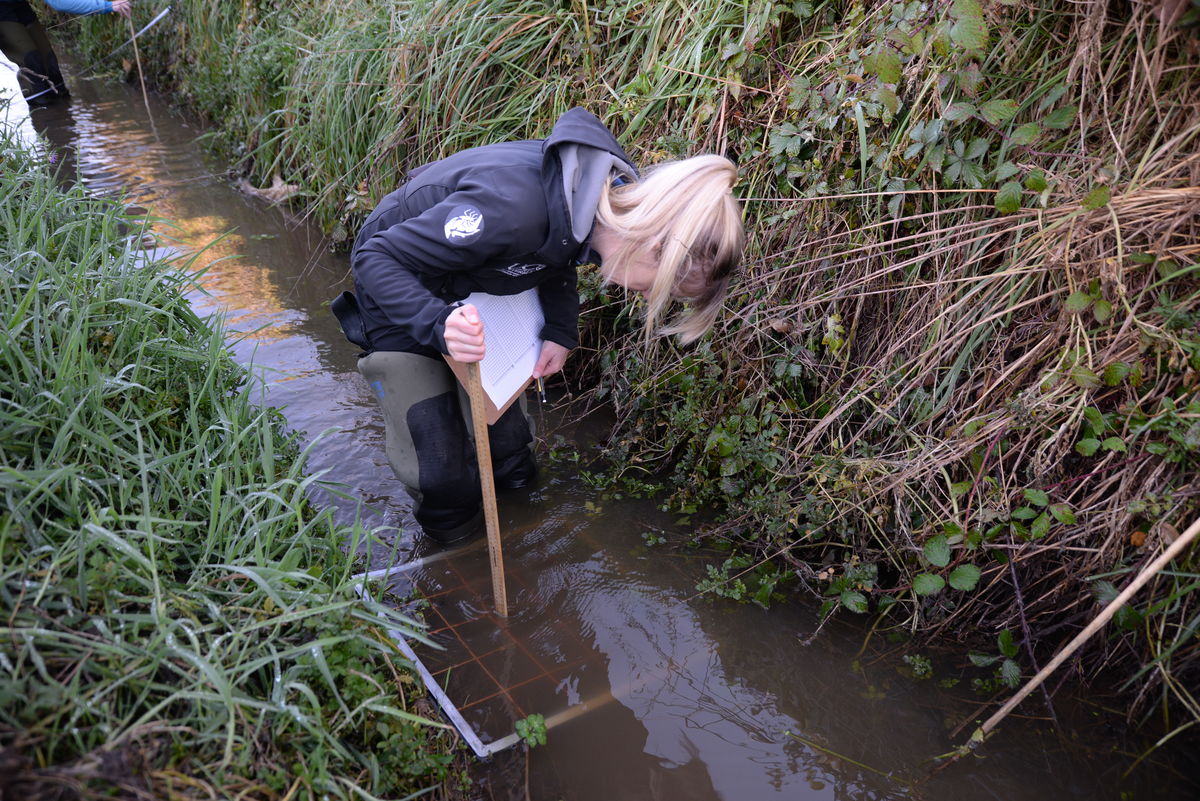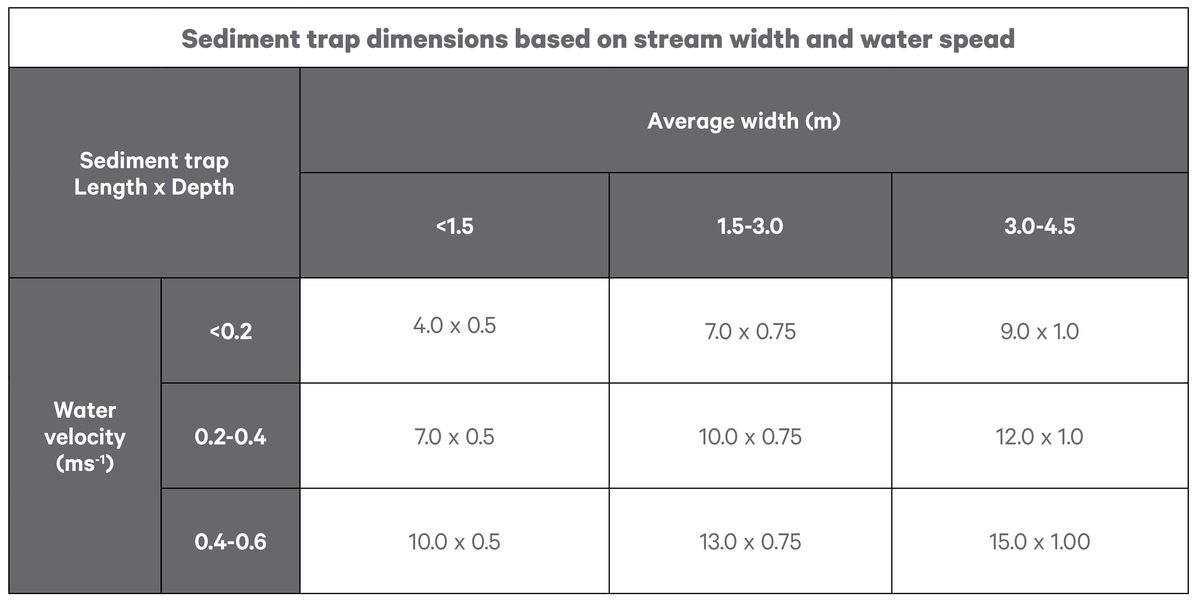
In-stream sediment traps
What is the problem?
Two years of research by the CAREX Group in the University of Canterbury’s School of Biological Sciences showed that although some sedimentation could be from the natural geology of the area, there are areas where improved sediment management could make a difference.
High levels of sediment smother the stream bed, reducing the habitat of aquatic plants, fish and insects that live in these waterways and can carry other pollutants, such as heavy metals, nutrients and microbes. Sediment can block light which prevents algae growth (food source for fish and insects), smothers fish gills making it difficult to breathe and prevents them from seeing well enough to find food and spawning habitat. A sediment-choked waterway will increase the risk of flooding.
The way smaller rural waterways are managed contributes to the excessive sediment issue. Diggers are used to manually remove aquatic plant growth and sediment from the streambed resulting in over steepened banks which over time will slump, be trampled by stock and erode during high flows.
What is the project?
In August 2020 Living Water installed an instream sediment trap, two-stage channel and woodchip bioreactor to improve nitrate levels and reduce sediment. The purpose of this two-stage channel was to reduce the impact of sediment and nitrates in times of high flow.
What was done?
A sediment trap is a long, deep pool within a waterway where the water flow slows significantly, allowing the particles of fine sand, silt and mud to drop out of suspension and sink to the bottom of the trap. Once full after about a year, the sediment in the trap can be removed with a digger and put on nearby farm paddocks. The sediment trap can then function again as intended. The sediment trap substantially reduced sediment in the water from flowing downstream and clogging the woodchip-filled bags in the bioreactor and accumulating on the downstream bed of the waterway.
How much does it cost?
The 15m long sediment trap was a cost-effective tool to build as it consisted of excavator and truck time for digging the trap (when the waterway was dry) and planting of the waterway margins.
Cost breakdown (gst exclusive):
- Excavator to dig the trap and truck to dispose of soil – approx. $166/metre @ $135/hour
- Bank planting both sides – $33/metre - 4 rows of plants as well as site preparation (pre-plant spraying), planting, plant guards and fertilizer tablets (not included is 3 years of maintenance spraying during plant establishment).
What did Living Water learn from this trial?
Sediment traps are a cost-effective way to reduce sediment.
Once installed, sediment traps require minimal maintenance with clearing required roughly once a year. Excess sediment can be used on-farm or removed by truck.
The size of the sediment trap required was determined using by measuring stream width and velocity, see the table below and the video for more detail. Based on these numbers the sediment traps should capture approximately 50% of fine silt moving through the trap until approximately half-filled.
Sediment traps can be installed alone or in a series.
The sediment trap installed with the bioreactor is working to prevent sediment clogging the woodchip bags. The sediment traps around the catchment are working, they are checked and emptied periodically.

Who could use this information?
Landowners, Regional Councils, Land Managers, catchment managers in areas where excess sediment is a problem.
Links to other resources
Bioreactor trial to reduce nitrates
